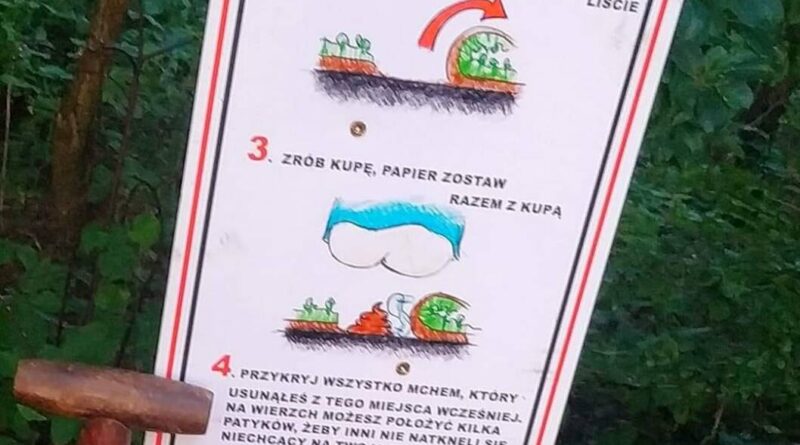Poland’s state forestry agency has put up signs showing people what to do if nature calls. The notices, titled “How to do a poo in the woods?”, contain five illustrated steps advising visitors to the Spychowo forest district in northeastern Poland on how to relieve themselves.
One of the signs, an image of which was widely shared on social media, has a specially labelled spade alongside it to help people bury their waste. The instructions advise walkers to conduct their business “deep in the woods” and to properly cover it up so that one one “unwittingly stumbles upon your surprise”.
If paper is used, it should be buried along with the waste, says the sign. If none is available, State Forests (Lasy Państwowe) suggests that dry moss makes a useful alternative.
Nadleśnictwo Spychowo uczy turystów jak prawidłowo załatwić potrzeby fizjologiczne w lesie, żeby inni nie musieli łazić po gówniakach. Można? Można. pic.twitter.com/oX3oEEUpE5
— jacekzarzecki (@jacekzarzecki) August 8, 2021
Earlier this year, the branch of State Forests in Spychowo also launched a campaign on its Facebook page illustrating “how to do a poo with respect for nature and ourselves”. It decided to create the material after a child visiting the forest was unsure how to relieve themselves, reported Dziennik Zachodni.
“Within a few hours, forest beetles will take care of your poo and there will not be any trace of it,” wrote State Forests. “The moss will continue to grow in the same place and those of us who visit the forest will not see a load of papierzaki [a slang term for human faeces covered with paper] and can walk on with a smile!”
The campaign has drawn both amusement and praise. “I know the topic is delicate, but kudos to State Forests for taking it up,” wrote Tomasz Sajewicz, a journalist for Polish public radio. “It is part of education regarding the etiquette of being in the woods.”

Daniel Tilles is editor-in-chief of Notes from Poland. He has written on Polish affairs for a wide range of publications, including Foreign Policy, POLITICO Europe, EUobserver and Dziennik Gazeta Prawna.




















